5 Alternatives for Sand in your Sandbox (Pros & Cons)
-
- Last updated:
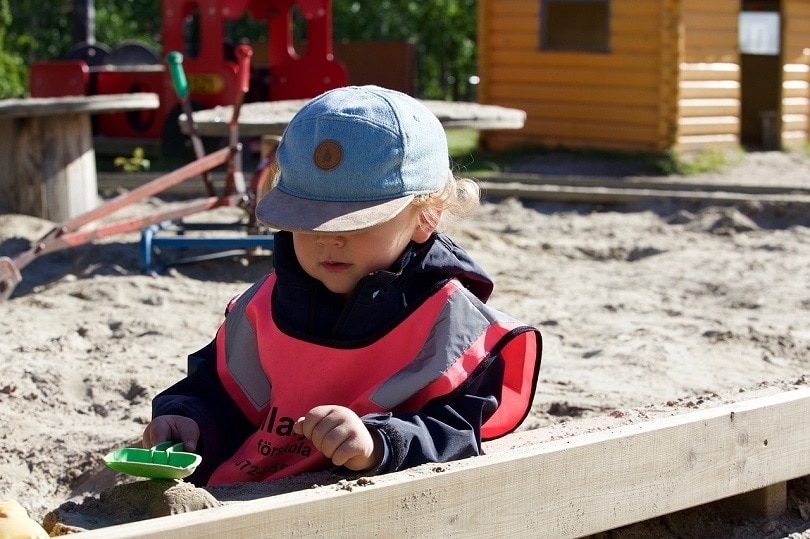

Although sandboxes can entertain children for hours, safety risks associated with sand can be particularly troublesome, especially for children with asthma and allergies. Sand alternatives may be a better option to keep your child happy and healthy while playing in their sandbox.
Sometimes, you may also be looking for alternatives for non-health reasons. For example, avoiding sand is probably best if you want your sandbox inside your home. Nobody likes a sandy home, even at the beach! Alternatives can provide the same fun experience for your children with fun without making a complete mess in your home.
Reasons to Opt for Alternatives to Sand
Traditional sand comes with several worrisome health risks and requires heavy maintenance. Many parents use sand alternatives for these reasons.
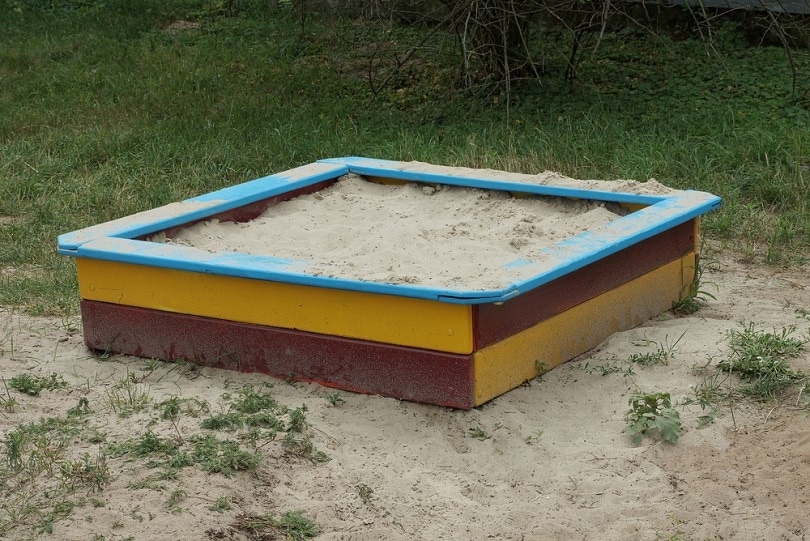
Tremolite
Unfortunately, some sands contain tremolite, a form of asbestos fibers. You’ve likely heard of asbestos if you have seen mesothelioma commercials. Asbestos is a mineral that causes mesothelioma, a rare form of aggressive cancer. This fiber is only dangerous if inhaled, where it can lodge in the lungs and cause cancer 20 to 50 years after exposure.
Many sand types undergo rigorous testing and regulations to ensure the products are free of tremolite. Still, some manufacturers are not forced to undergo this testing based on the classification of the sand they sell. After learning about the lack of testing, some parents select a sand alternative to ensure their child is not exposed to tremolite.
Dust
A less serious but more common reason parents use sand alternatives is dust. Play sand, which is a type of sand that has undergone rigorous cleaning and regulations for safety purposes, is often ground so finely that it can create large dust clouds while your child is playing.
This health risk is especially worrisome for children with asthma or allergies. Adults with these illnesses can also face serious side effects, including respiratory illnesses and symptoms.
Cuts and Scrapes
If you do not rigorously test your sand, the sand you select can cut or scrape your child. Many unnatural sands are manufactured from rocks and clay, not real sand. During the manufacturing process, the materials are broken down into sand-shaped particles. Despite being broken down, the edges are still jagged and can cut and scrape your child while they’re playing.
Though minor cuts are not normally serious, they can turn into a large issue if the cut gets infected. Since most sandboxes are outside, an infection is more likely to occur.
Bacteria
Sandboxes can also become riddled with bacteria, especially if water is not dried or the sand is not cleaned properly. Bacteria can cause some serious illnesses and infections. Because many sandboxes are outside, where children are more likely to get cuts, you don’t want your child playing in a bacteria-riddled box.
Requires Heavy Maintenance
To ensure that your sandbox remains clean and bacteria-free, you will need to maintain the sandbox before and after every use. This includes raking the sand, removing particles, and allowing any moisture to dry. You also need to be diligent in closing the box to prevent insects and animals from making a home inside.
Why Sandboxes Matter
Given these potential health risks and extra maintenance needs, you might immediately think a sandbox is not for you and your family. Before jumping to that conclusion, you need to know about the benefits of a sandbox, especially those that utilize alternatives to sand.

Improves Motor Skills
Sandboxes are one of the best ways to ensure your child’s motor skills develop properly. Playing with sand or an alternative material forces your child to learn how to mold and shape items. All the while, they learn patience through their mistakes.
Improves Communication Skills
Sandboxes are often a hangout for children. As a result, children learn crucial communication and language skills around a sandbox. Not only do they get to talk about their day or interests, but they can also work together and learn effective communication as they try to build bigger items.
Enhances Creativity and Imagination
Being creative is essential for a successful life. Whether you have a new project at work or want to surprise a friend with a new gift, creativity helps you think of solutions to your problems, allowing you to live the life you want. Sandboxes enhance your child’s creativity and imagination from a young age, giving them the necessary skills they will use throughout their lives.
Provides Device-Free Entertainment
The most significant benefit of a sandbox is that it provides your child with device-free entertainment. It gets them outdoors and excited to play in an interactive and healthy way. In the modern world, device-free options are becoming increasingly a thing of the past. Not to mention, you get a little bit of much-needed you-time!
5 Alternatives for Sandbox Sand
As you can see, sandbox play time is crucial in your child’s development. However, sand traditionally used in the boxes can pose some worrisome side effects. Avoid these unwanted side effects while maximizing the benefits of a sandbox by using these sand alternatives instead:
1. Round Gravel or Pebbles
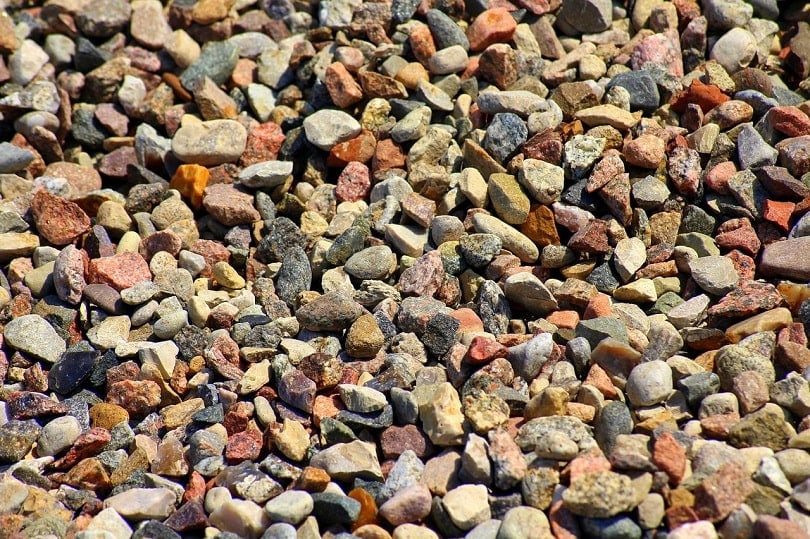
Pea gravel or small pebbles are a great alternative to sand in an outside sandbox. As long as the rocks are rounded with no jagged edges, they can provide your children with a safe and fun play environment. This material will also prevent mold or bacteria growth since water drains to the bottom.
You must be careful allowing young children to play in pea gravel because they may be more tempted to swallow the rocks.
- Does not cause cuts
- Prevents dust
- Prevents bacteria or mold
- Ideal for outdoor sandboxes
- Potential choking hazard
- Cannot build items as easily
2. Crumb Rubber

You can use crumb rubber instead of sand if you have a little extra money. Crumb rubber is made from rubber, and it’s soft and comfortable. You are probably familiar with crumb rubber since many public play areas use it on the ground.
However, crumb rubber can also be a choking hazard for a young child. You will need to wash the rubber before placing it in the sandbox to remove any residue from the surface.
- Breaks falls
- Does not cause cuts
- Prevents dust
- Prevents bacteria or mold
- Ideal for outdoor sandboxes
- Potential choking hazard
- Cannot build items as easily
- Expensive
3. Styrofoam Packing Peanuts

Styrofoam packing peanuts are an excellent sand alternative for indoor and outdoor sandboxes. They are fun and light, and your child can play without risking their health. Packing peanuts are easy to clean and will not leave residue or dust in your home or on your child.
If you use Styrofoam packing peanuts outside, ensure the sandbox remains closed when not in use. Also, keep in mind that children should not ingest packing peanuts. You have to watch the children carefully when playing with styrofoam.
- Does not cause cuts
- Does not make a mess
- Great for indoor and outdoor sandboxes
- Inexpensive
- Cannot build items as easily
- Should not be ingested
4. Rice
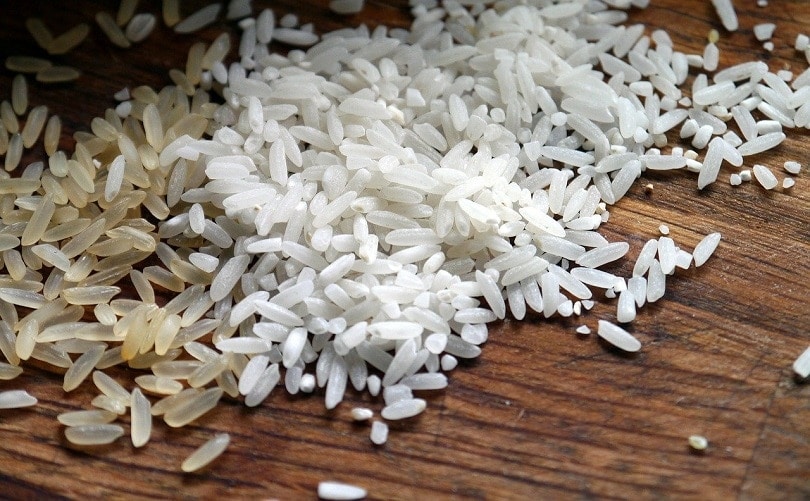
For an indoor sandbox, you can fill it with rice. Rice has a similar look and feel to dry sand and allows kids to pretend to play in an actual sandbox. All the while, it is not too difficult to clean up.
Of course, rice is not a good option for outdoor sandboxes. Animals will likely try to eat the rice, which can harbor mold and bacteria when exposed to water. Only use rice in indoor sandboxes. Additionally, wash out the rice before play to prevent any dust. Allow the rice to dry completely before putting it in the sandbox.
- Does not cause cuts
- Prevents dust (if washed)
- Does not make a mess
- Great for indoor sandboxes
- Inexpensive
- Cannot build items as easily
- Not suitable for outdoor sandboxes
5. Beans
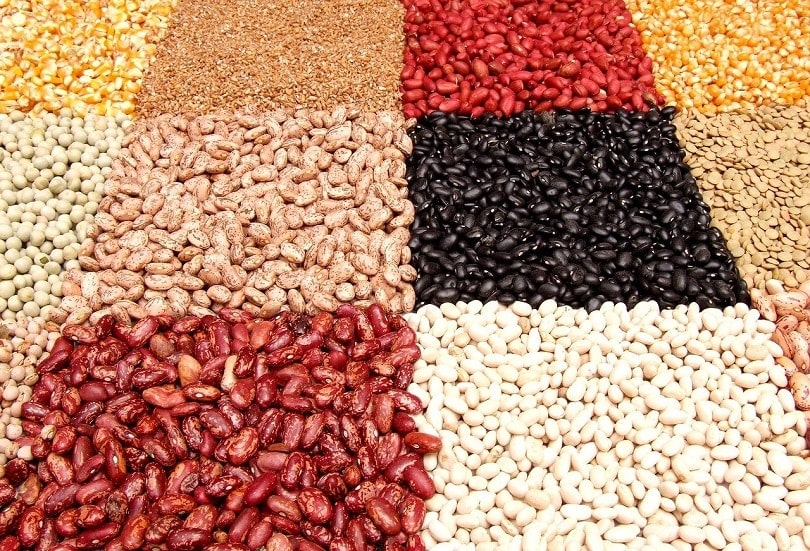
Dry beans are another great indoor sandbox sand alternative. Dry beans are incredibly cheap and will entertain your kids for hours. You can also use uncooked beans in other ways, such as teaching the children how to count.
Like with rice, dry beans are only suitable for indoor sandboxes. They are also a potential choking hazard in young children. You must supervise young children as they are playing with dry beans.
- Does not cause cuts
- Does not make a mess
- Great for indoor sandboxes
- Inexpensive
- Can be used for learning how to count
- Cannot build items as easily
- Not suitable for outdoor sandboxes
- Potential choking hazard

Conclusion
Sandboxes teach children so many crucial skills, but you don’t have to throw out the sandbox because of the health risks. Instead, choose sand alternatives like pea gravel, crumb rubber, Styrofoam packing peanuts, rice, or beans. These alternatives are much safer than sand and will provide hours of playtime for the kids.
Featured Image Credit: TJENA, Pixabay
Contents

